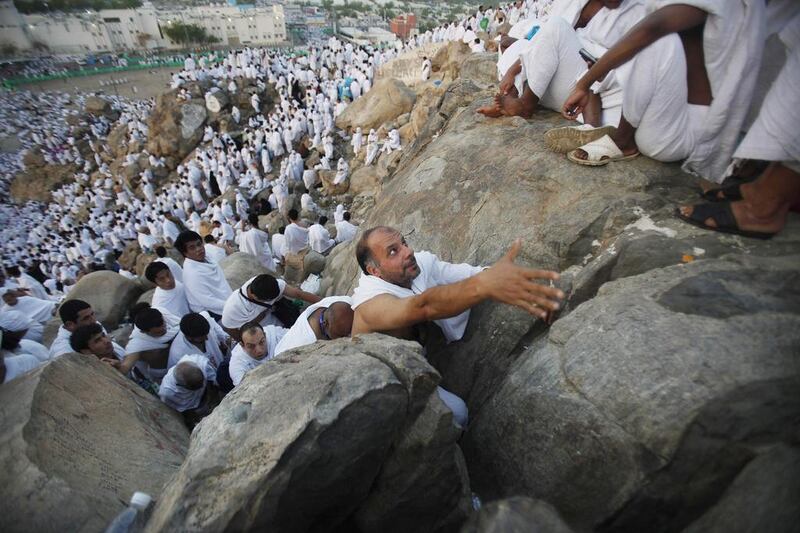A sea of men, women, and children draped in the traditional white ihram engulfed Mount Arafat yesterday, beginning prayers that mark the high point of the Haj.
“Labaik Allahum Labaik”, or “Here I am, God, answering your call. Here I am,” the pilgrims called during a part of the Haj known as Wuquf — an afternoon of reflection and prayers for forgiveness. They huddled in tents and under trees for relief from 40-degree heat.
The pilgrims, 1.5 million from 188 countries, represent the full spectrum of Islamic traditions, languages, and cultures.
But on the site where the Prophet Mohammed gave his last sermon, Saudi Arabia’s Grand Mufti urged worshippers to steer clear of those who would use such differences to divide them.
“Your nation is a trust with you. You must safeguard its security, stability and resources,” Sheikh Abdulaziz Al Sheikh said in a sermon from Mount Arafat’s Namirah Mosque. He said Haj was not a time for political or ideological slogans.
“You should know that you are targeted by your enemy … who wants to spread chaos among you. It’s time to confront this,” he said, and there was “no salvation or happiness for the Muslim nation without adhering to the teachings of the religion”.
Sheikh Abdulaziz’s words came as a reminder of the Haj’s unique role in forging unity in the Islamic world — often despite political fissures between countries sending citizens to the Haj.
Saudi authorities this year have been adamant that regional turmoil in Syria, Iraq, Egypt, and elsewhere would not interfere with the pilgrimage.
“Not a single regular pilgrim coming from outside or inside was found breaching Haj sanctity,” said the interior ministry’s security spokesman, Maj Gen Mansour Al Turki.
“However, our security men, who are found everywhere in the Haj zone, are ready to put an end immediately and decisively to any irregularity.”
Prince Mohammed bin Nayef, the interior minister and chairman of the Haj Supreme Committee, said 1,379,531 international pilgrims were taking part in the Haj this year, in addition to 117,000 from within Saudi Arabia.
Saudi authorities reduced the numbers of pilgrims this year by about 20 per cent to accommodate construction to expand the Grand Mosque and amid fears that the Mers virus, which at first exhibits symptoms similar to Sars, could spread.
Health officials are on alert this year with Saudi Arabia at the centre of the Mers outbreak, accounting for 119 of the 138 cases reported globally.
There have been “no epidemic or quarantine cases reported and no coronavirus case recorded”, health minister Khalid Marghalani said on Sunday night.
In addition to cutting numbers, security forces have also vowed to keep away pilgrims without the proper permits. Each year, thousands of locally resident pilgrims are believed to try to attend the Haj illegally, which authorities say contributes to crowding and gridlock.
Prince Khalid Al Faisal, the governor of the Mecca province, said authorities had also stopped more than 70,000 people who were caught without the proper Haj permits. Security forces also stopped 138,000 vehicles for breaking regulations.
The pilgrims’ time on Mount Arafat is the pinnacle of the Haj pilgrimage, a week-long journey that began on Sunday and ends on Friday.
On reaching Arafat, pilgrims scattered across the rocky hill and the vast plain surrounding it prayed until sunset, when they departed for nearby Muzdalifah, where they spend the night before moving on this morning to start the ritual of symbolically stoning the devil.
* Additional reporting by Agence France-Presse





